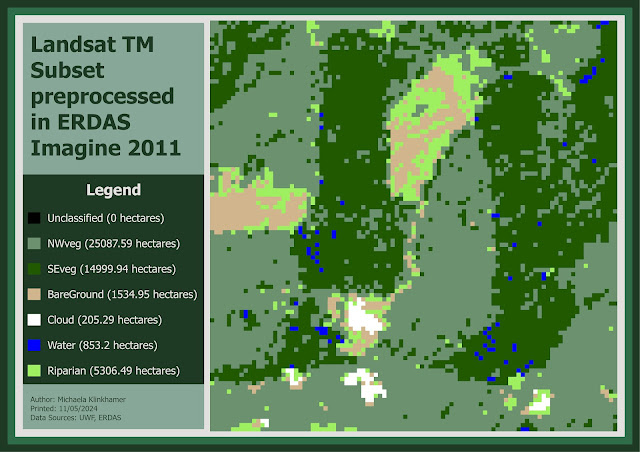M2 - LiDAR
Exploring Forest Canopy with LiDAR
In this week's GIS lab, we explored the world of forestry using LiDAR (Light Detection and Ranging) technology. This exercise was particularly interesting for me since I could explore spatial analysis more in line with my Fisheries and Wildlife Science degree. Our goal was to analyze the forest canopy and terrain in Shenandoah National Park, Virginia, providing critical insights for forest management and conservation efforts.
Using LAS files and creating DEM from LiDAR data
Data Download and Preparation: We began by downloading and decompressing LiDAR data. This step involved using specialized software to handle .las files, which contain detailed point cloud data representing the forest's 3D structure.
Creating DEMs and DSMs: We created Digital Elevation Models (DEMs) and Digital Surface Models (DSMs), not pictured, from the LiDAR data. DEMs represent the bare earth terrain, while DSMs include all surface features like trees and buildings.
Calculating Forest Height and Biomass from LiDAR data
Calculating Forest Height: Using the DSM and DEM, we calculated the height of the forest canopy. This step involved subtracting the DEM from the DSM, revealing the elevation of vegetation above the ground.
Biomass Density Calculation: We estimated the forest biomass by converting LiDAR points to raster format, calculating the density of vegetation in the area. This information is crucial for understanding forest carbon storage.
Key Findings:
Vegetation Height Distribution: The histogram revealed that most trees in the study area range from 20 to 85 feet, with a mean height of approximately 54.4 feet. This diverse height distribution indicates a healthy, mature forest with significant habitat diversity.
Impact of Man-Made Features: Roads and houses were identified along the forest borders, affecting vegetation growth through habitat fragmentation and altered microclimates.
Applications:
Forest Management: The insights gained from this lab are invaluable for forest management, aiding in resource allocation, biodiversity conservation, and fire risk assessment.
Environmental Monitoring: By understanding the forest structure and biomass, we can better monitor forest health and contribute to climate change mitigation efforts through accurate carbon sequestration estimates.





Comments
Post a Comment